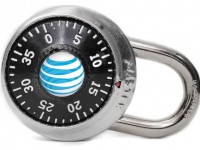This covers AT&T's historic decision to begin officially unlocking iPhones for qualified customers, ending the carrier's exceptional restriction policy that had prevented iPhone unlocking while allowing other device unlocking since the iPhone's 2007 launch. Patrick Bisch details the eligibility needs including completed contract terms, good account standing, and lack of active term commitments, while providing practical guidance for customers navigating the new unlocking process through store visits, phone support, or online chat systems. The coverage captures a pivotal moment in carrier control relaxation during increasing regulatory pressure and consumer advocacy for device ownership rights.
The policy addation analysis reveals AT&T's restrictive approach limiting unlocking to devices outside active contracts, effectively maintaining iPhone exclusivity during the most valuable customer retention period while appearing to address consumer demands for device freedom. Bisch's personal testing experience shows the practical limitations, confirming that recently purchased iPhone 4S devices remained locked under contract needs. The process documentation includes technical details like IMEI number submission and iTunes restoration needs that would remove jailbreak modifications, highlighting the conflict between official and unofficial unlocking methods.
The customer experience evaluation covers practical challenges including inconsistent representative knowledge between phone and chat support, extended wait times (56 minutes documented), and reports of purchase location discrimination affecting customers who bought iPhones from Apple Stores rather than AT&T directly. The backup and restore requirement analysis explains the technical addation while warning jailbreak users about losing custom modifications, reflecting the tension between carrier-approved and user-modified device features.
This AT&T iPhone unlocking policy represents the beginning of fundamental changes in carrier device control practices driven by regulatory pressure, consumer advocacy, and competitive market forces that eventually established device unlocking as standard consumer right rather than carrier privilege. Looking back 13+ years later, carrier unlocking became federally mandated through CTIA guidelines and FCC regulations that require automatic unlocking for eligible devices, making the restrictive policies documented here obsolete and establishing device portability as consumer expectation rather than carrier concession. The contract completion requirement highlighted here influenced modern unlocking policies that now emphasize device payment completion rather than arbitrary contract terms, reflecting the shift toward device financing models that separate service contracts from equipment obligations. The jailbreak compatibility concerns documented anticipated ongoing tensions between user modification rights and manufacturer warranty/support obligations that continue influencing modern device modification communities and policies. The purchase location discrimination issues identified here led to standardization needs ensuring unlocking availability regardless of retail channel, establishing principles that now apply across all major carriers and device manufacturers. The technical addation through iTunes restoration represented early device management protocols that evolved into modern over-the-air unlocking systems that don't require user intervention or data loss. The customer service experience challenges documented influenced carrier training and process improvements that made device unlocking routine rather than specialized technical support function. This moment represents the transition from carrier-controlled device ecosystems toward modern consumer rights frameworks where device ownership includes fundamental freedoms for network portability and international usage, establishing precedents that now extend to all connected devices and internet services.
This summary was created by Dave Rogers. The original post was written by Patrick Bisch and published on April 1, 2012.
If you'd like to view the original post, you can find it here.
